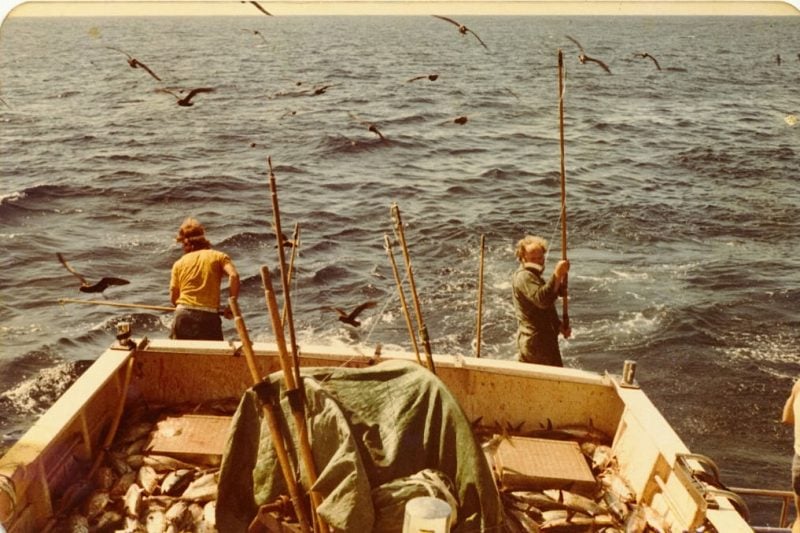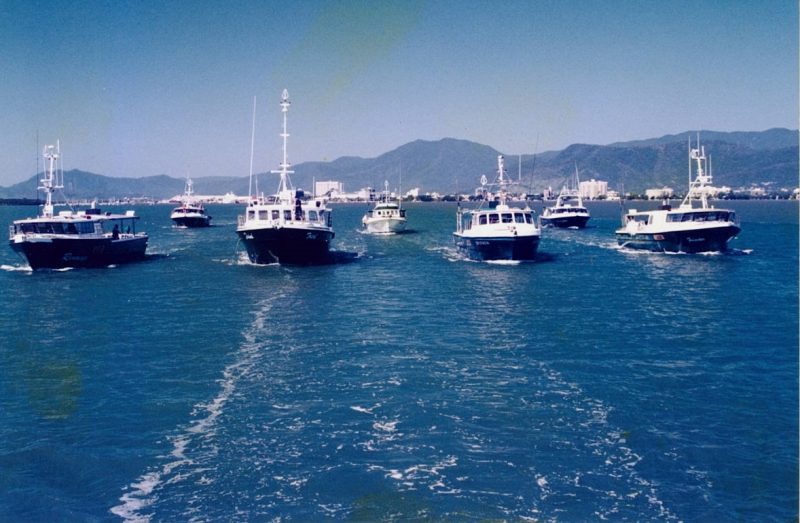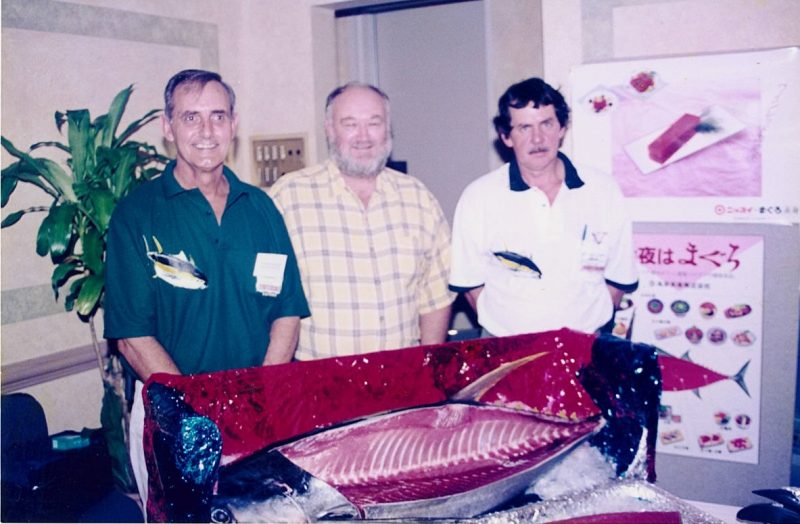‘I still get the buzz’: Pioneer Bob Lamason reflects on a lifetime of tuna fishing
Bob Lamason, a legend of the tuna longlining industry, started the fishery in Cairns, Queensland. Following his recent decision to retire, we spoke with Bob about his career journey, the impacts of COVID and what he will do next.
You’ve been fishing for around 50 years. How did you get started in the industry?
I loved diving and started as a cray diver in the early 1970s in Western Australia. I was 24 years old. After two seasons of cray diving, I bought an abalone licence in Esperance, WA, which I did for a few years. Then, in 1978–79, I bought a tuna boat to fish out of Esperance. In 1981, I built a small new tuna boat and mostly fished out of Esperance but also did one or two seasons pushing to the east in the Great Australian Bight. After some time, I sold that boat and bought a bigger one and spent another year fishing in the bight.
For most of your career, you’ve worked out of Cairns. What led you there?
Since the government introduced quotas for Southern Bluefin Tuna (SBT) in 1984, it became almost impossible for me to make a living from SBT fishing out of Esperance. So, I sold everything except the boat and moved with my family to Cairns in 1988. We chose Cairns because it had good aeroplane access to Japan, meaning we would have no problem moving fish.

Bob polling Bluefin Tuna on his boat, the F.V. Question, in c. 1984.
In the early 1990s, tuna longlining in Australia was fairly new. How did you start the fishery in Cairns?
When I moved to Cairns, no tuna longlining industry existed. We had to start the fishery right from the word go. Everything we did was experimental. We had to figure out how to handle fish in the warm waters off Cairns. It wasn’t that easy.
Because Cairns is a relatively remote area, it was an expensive place to fish out of. All our fishing supplies had to come from somewhere else, meaning we were paying $3 for each carton of supplies brought up from Brisbane by truck. Everything we sold from Cairns went by aeroplane, so we had to pay airfreight for everything, whereas fishing companies in Brisbane, for example, could use trucks.
Despite the challenges, we turned a profit within 1–1.5 years. Starting the fishery is my proudest achievement. Also, I became the first person in Australia to be a 100 percent longliner as I was only chasing tuna and billfish. Other fishers in Australia were part-time longliners and part-time trawlers. However, in Cairns, I could do tuna longlining all year.
What do you love about fishing?
The thrill of the hunt. To see fish come up on the line—be it tuna, broadbill or other species—is pretty exciting. If I’ve spent a lot of time not catching any fish, or had poor shots, it’s an adrenalin buzz to finally catch a big one. I still get the buzz today, even after my many decades of fishing.

Bob's fleet in c. 1997, which grew to 13 boats in 2002.
What’s a key challenge faced by the tuna industry today?
There is a worldwide trend to build smaller, narrow-body planes that are more efficient and cheaper to run. But these planes don’t take any freight, which is the main way that tuna companies move their produce to other countries. Most people don’t realise how much freight is moved by aeroplanes. For instance, an average plane going to Japan will take 25 tons of freight, even with a full passenger load. It’s the same with a lot of the planes flying around Australia.
How has COVID impacted seafood sales in Australia?
COVID has been relatively good for seafood sales, especially white fish. Before the pandemic, 80 percent of seafood was consumed in restaurants. Now it’s down to 30–40 percent. Because of the lockdowns, people were spending all their time and had money to spend, so they were choosing to make a nice seafood meal at home. I know of seafood companies that used to sell primarily to major wholesalers cutting up fish for restaurants but not sell only to retailers and can’t keep up with the demand. This shift will create long-term benefits for the industry.
A passion for fishing runs in your blood. Are your children also involved in the industry?
All my children learned a lot about fishing growing up, particularly those with their skipper’s ticket. Today, two of my sons are involved directly with fishing. One of my other sons ran the factory for my company, Great Barrier Reef Tuna, for a while. And my other son is a cray diver. Meanwhile, my daughter is an accountant and has no connection to fishing!

(L-R) Chris Edwards (General Manager), Bob Lamason and Errol smith (Pack Out Manager) displaying a tuna to Japanese buyers in c. 1998.
In late 2021, you sold your boat and most of your quota. What will you do in retirement?
I’m not sure yet what I’ll do next. Everyone is saying go and relax but I can’t just sit around all day. I might do some experimental fishing as there are so many species in Australia that haven’t been developed to their full potential, such as squid down south and tuna in the Coral Sea. Nobody is prepared to experiment with exploring for new fisheries using different fishing methods because it is costly, there is little support from the government, and you don’t know what the government will do. So maybe I’ll do that…maybe.
What’s your favourite seafood recipe or dish?
I love all seafood. I will eat any type of seafood. This is probably surprising, but I eat a lot of sole—about once or twice a week. Mahi mahi is a beautiful fish that can be served battered, crumbed or just with butter. All that really matters is eating good fish—that’s my favourite seafood meal.
Read more about Bob’s efforts to start the tuna fishery Cairns in SPC Fisheries Newsletter #83 — October/December’97